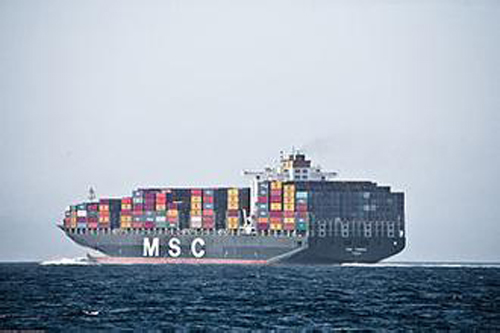Shippers’ woes could soon cost you
The connection between China's manufacturing and the U.S. furniture business has become such an established part of daily discourse that it was somewhat jarring at last week's Furniture Today Logistics Symposium to hear that global shipping challenges could soon have significant and disruptive effects on that commerce.
The connection between China's manufacturing and the U.S. furniture business has become such an established part of daily discourse that it was somewhat jarring at last week's Furniture Today Logistics Symposium to hear that global shipping challenges could soon have significant and disruptive effects on that commerce.
Paul Hargett, vice president of sales for Mediterranean Shipping Lines (MSC), the world’s second largest shipping company, speaking at the symposium put on in partnership the American Home Furnishings Alliance (AHFA), issued a dire warning to attendees around the shipping segment’s declining profitability. He painted a picture of an industry “hanging on by its fingertips” and suggested that a significant number of current industry players will be gone within the next year.
Hargett also indicated that for the first time there are discussions within that industry about the discontinuation of routes between Asia and the U.S. because of the extreme lack of profitability. The industry’s response to the global profitability challenge has been to create megaships, such as MSC’s Oscar, a 19,200 TEU (twenty foot equivalent) behemoth that is the length of four football fields.
The deployments of these ships, the largest of which will only be used between Asia and Europe due to the inability of U.S. ports to handle them, are an effort by the shipping industry to achieve the economies of scale necessary to survive, according to Hargett.

The presentation apparently came across as a plea to accept higher shipping rates for at least one attendee, who used the Q&A period to challenge Hargett about why companies should accept higher rates to compensate for, what the attendee described, as shipping industry inefficiency.
During the exchange, Hargett suggested that current rates are being set by desperate companies’ efforts to survive in the short term, forcing all players to engage in unprofitable fee structures. The attendee, pointing to other times when shipping customers have had to “pay through the nose” for container space, contended that customers should not have to pay higher rates simply because the shipping industry is engaged, for whatever reason, in unprofitable behavior.
It was a fascinating exchange but one that, taken to its logical conclusion, appears moot. If as Hargett suggests, many current shipping companies are on the verge of collapse and indeed current routes between the U.S. and Asia are in jeopardy, the result is the likely elimination of both failing players and unprofitable routes.
At some point, presumably, equilibrium will be achieved with the number of providers declining to more closely match the volume of goods transported. Similarly, unprofitable routes will be eliminated or rates will have to change to make critically important routes profitable enough for someone to continue servicing them.
When that occurs it seems all but certain that rates will rise in order to allow those remaining players and routes to operate their business profitably.
Seems to me the only question at issue is whether those attempting to get goods from Asia pay higher rates now, or later.

 沪公网安备31010402003309号
沪公网安备31010402003309号



